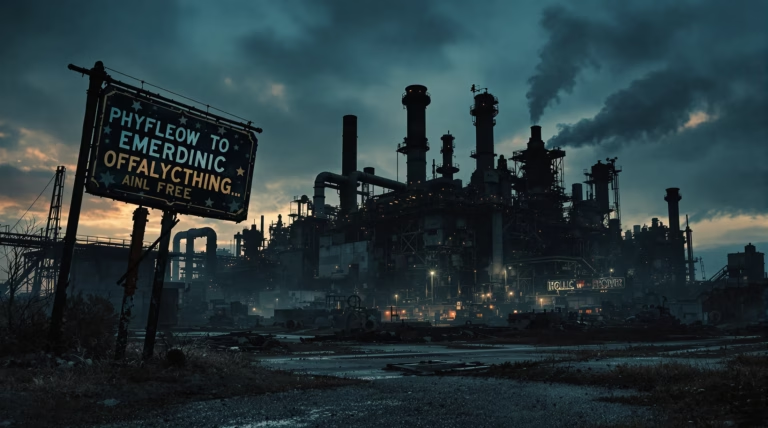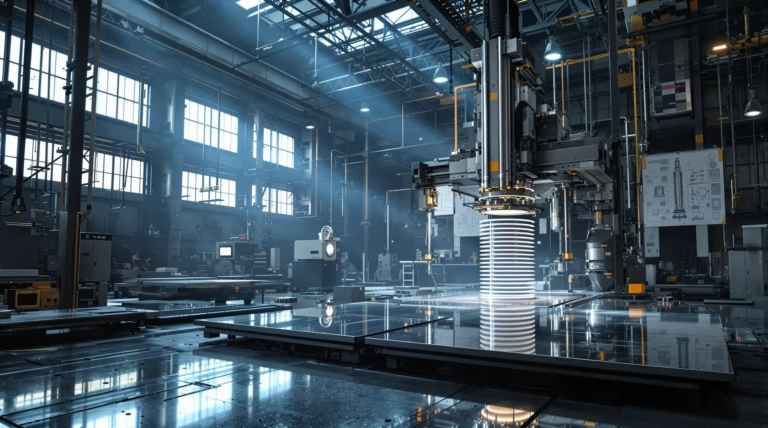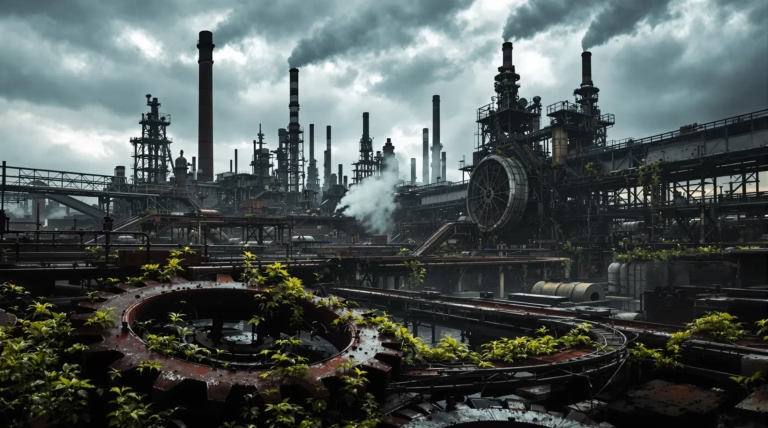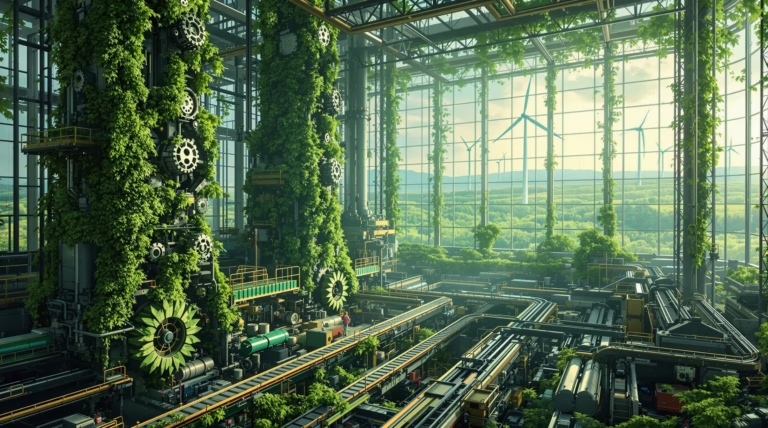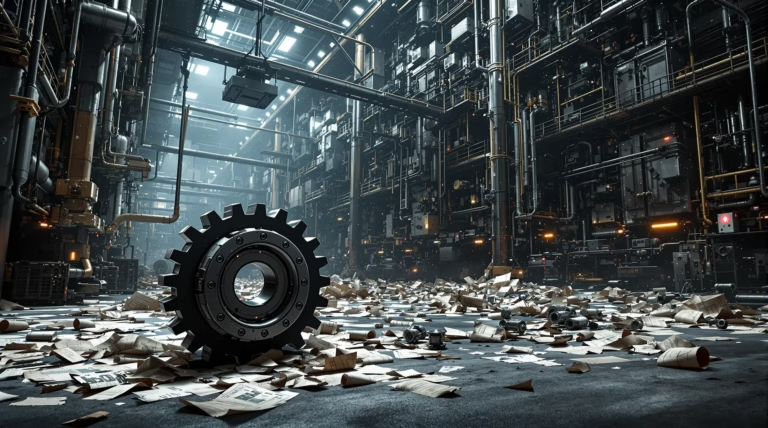Manufacturing Companies: Top Insights and Trends for 2025
The manufacturing sector stands as a cornerstone of global economic development, driving innovation and shaping the future of industry. Let’s explore the current state and future prospects of manufacturing companies, examining their impact, technological evolution, and the transformative trends shaping the industry through 2025.
The Role of Manufacturing Companies in the Global Economy
Manufacturing companies serve as engines of growth, innovation, and prosperity, transforming raw materials into valuable finished products. In 2023, while manufacturing directly accounted for 11% of U.S. GDP, its influence extends significantly further:
- 20% of capital investment driven by manufacturing
- 30% of nationwide productivity growth
- 60% of U.S. exports generated
- 70% of business R&D funding received
- Substantial support for auxiliary industries including logistics and maintenance
Economic Impact of Manufacturing Companies
The manufacturing sector’s influence creates a powerful multiplier effect throughout the economy. While directly employing 8% of the U.S. workforce, each manufacturing job generates approximately 2.5 additional positions in related industries.
| Impact Area | Contribution |
|---|---|
| Direct Economic Output | 11% of GDP |
| R&D Spending | 70% of private sector |
| Employment Multiplier | 1:2.5 ratio |
Key Industries within the Manufacturing Sector
The manufacturing landscape encompasses diverse industries with significant global impact:
- Automotive Manufacturing: – produces over 80 million vehicles annually, generating $2.7 trillion in revenue
- Electronics Manufacturing: – projected to reach $7.3 trillion by 2025
- Food Processing: – employs 1.5 million U.S. workers, contributing $1 trillion globally
- Other Vital Sectors: – aerospace, pharmaceuticals, chemicals, and textiles
Technological Advancements Transforming Manufacturing
Modern manufacturing facilities are undergoing a revolutionary transformation, with smart factories reporting:
- 15-30% increase in productivity
- Up to 25% reduction in defects
- 50% of manufacturers implementing smart technology by 2025
The Rise of Automation and Robotics
The integration of automation and robotics continues to accelerate, with global industrial robot installations reaching 422,000 units in 2022. This figure is expected to double by 2026, driven by advances in:
- Advanced sensors and machine vision systems
- Adaptive gripping mechanisms
- Collaborative robots (cobots) with sophisticated safety features
- Human-machine collaboration capabilities
- Rapid prototyping and testing systems
Impact of AI and Data Analytics
Artificial intelligence and data analytics are fundamentally transforming manufacturing operations, creating unprecedented opportunities for efficiency and innovation. AI-powered predictive maintenance systems deliver remarkable results:
- 90%+ accuracy in predicting equipment failures
- 50% reduction in operational downtime
- 20-40% extension in machine lifespan
- 15-30% reduction in material waste
- 10-20% savings in energy consumption
Data analytics has evolved into sophisticated prescriptive systems that provide specific corrective actions. The implementation of advanced analytics yields significant improvements:
| Performance Metric | Improvement |
|---|---|
| Demand Forecasting Accuracy | 20-30% better than traditional methods |
| Root Cause Analysis | Minutes vs. days traditionally |
| Production Parameter Control | Autonomous optimization |
Sustainability and Eco-Friendly Practices in Manufacturing
Sustainability has become a central business imperative in manufacturing, delivering multiple measurable benefits:
- Enhanced brand reputation and market positioning
- Expanded customer reach
- 40% reduction in operational waste
- 5-15% increase in profit margins
- 73% of consumers willing to pay premium for sustainable products
Adoption of Sustainable Materials
The transition to sustainable materials represents a fundamental shift in modern manufacturing. Companies are implementing innovative alternatives:
- Biodegradable alternatives to petroleum-based plastics
- Regenerative options replacing water-intensive natural fibers
- Advanced composites from agricultural byproducts
- Enhanced durability materials with improved thermal properties
- Supply chains with verified environmental credentials
Reducing Carbon Footprint in Manufacturing
Manufacturers are implementing comprehensive carbon reduction strategies through various initiatives:
- 40-90% reduction in facility carbon emissions through renewable energy integration
- 15-30% decrease in energy consumption via smart building management
- $0.25-0.35 per square foot annual savings through energy-efficient manufacturing
- Implementation of heat recovery systems
- AI-driven real-time energy optimization
Supply Chain Management and Its Importance
Effective supply chain management delivers significant competitive advantages:
| Performance Metric | Improvement |
|---|---|
| Supply Chain Costs | 15% reduction |
| Inventory Turns | 50% faster |
| Fulfillment Rates | 30% improvement |
| Operational Visibility | 25-30% enhancement |
| Supply Chain Responsiveness | 10-15% increase |
Challenges in Supply Chain Management
Manufacturing supply chains face unprecedented complexity in today’s global marketplace. The fragmentation of production networks, driven by technological advances and shifting trade agreements, creates multifaceted challenges for managers. With 65% of manufacturers struggling with demand prediction, organizations frequently encounter costly overstocking or damaging stockouts.
- 94% of Fortune 1000 companies experienced supply chain disruptions during COVID-19
- Just-in-time inventory management increases vulnerability to disruptions
- Natural disasters and political instability pose significant risks
- Transportation bottlenecks affect delivery schedules
- Supplier financial difficulties threaten supply continuity
Forward-thinking manufacturers are implementing risk mitigation strategies that can reduce disruption impacts by up to 60%, including advanced risk modeling tools, geographic supplier diversification, and robust contingency planning.
Innovative Solutions for Supply Chain Optimization
Technological innovation is transforming supply chain management with unprecedented visibility and control. Advanced analytics platforms now detect potential disruptions with 85-90% accuracy, enabling proactive risk management.
| Technology | Impact |
|---|---|
| Blockchain Implementation | 37% improvement in component traceability |
| AI/ML Inventory Management | 15-25% reduction in carrying costs |
| Digital Twin Technology | 30% reduction in failed initiatives |
Workforce Development in the Manufacturing Sector
The manufacturing sector faces a critical workforce challenge, with projections indicating 2.1 million unfilled positions by 2030. This growing skills gap reflects the increasing demand for digital literacy and technical expertise in automated environments.
- 24% higher productivity in companies with strong workforce development
- 21% increased innovation capabilities
- 28% improvement in employee retention rates
- Comprehensive engagement through apprenticeships and internships
- Educational partnerships building robust talent pipelines
Training Programs for Manufacturing Skills
Modern manufacturing training has evolved to incorporate sophisticated Learning Management Systems (LMS) that deliver personalized skill development. These platforms achieve competency development 40% faster while reducing training costs by 30%.
- Integration of simulation technologies and virtual reality
- Gamification elements for enhanced engagement
- Balanced technical and regulatory compliance training
- Cross-functional learning opportunities
- Regular skills assessment and certification maintenance
The Future of Workforce in Manufacturing
The manufacturing workforce of 2025 and beyond will operate in an environment where human skills and technological capabilities complement each other. Gen Z workers (born 1997-2012) are projected to make up 27% of the manufacturing workforce by 2025, bringing new perspectives as digital natives. This demographic shift coincides with an unprecedented retirement wave, as 2.6 million skilled workers are expected to leave the industry by 2030.
- Knowledge transfer programs capturing expertise through documentation and mentoring
- Digital competency development through upskilling initiatives
- Recruitment strategies highlighting sustainability and innovation
- Creation of hybrid roles combining human judgment with technology
- Flexible career progression models accommodating diverse skills
Quality Control and Standards in Manufacturing
Quality control directly influences brand reputation, customer loyalty, and financial performance. Companies with robust quality control systems demonstrate remarkable improvements compared to industry averages:
| Performance Metric | Improvement |
|---|---|
| Product Defects | 35% reduction |
| Warranty Claims | 29% reduction |
| Customer Satisfaction | 17% increase |
| Production Costs | 23% reduction |
Importance of Quality Assurance
Quality Assurance has evolved into a strategic business function driving manufacturing excellence. Organizations with mature QA programs achieve:
- 40-60% reduction in quality incidents
- 25% higher production efficiency
- 12% higher profit margins
- Enhanced brand reputation and customer relationships
- Improved regulatory compliance
Leading manufacturers invest 3-5% of revenues in quality assurance infrastructure, fostering organizational cultures where quality becomes a shared responsibility.
Technological Tools for Quality Control
Advanced inspection systems utilizing computer vision and AI algorithms have revolutionized quality control, delivering:
- 500 units per minute inspection speed (400% improvement)
- 99.8% inspection accuracy
- 40% reduction in quality-related labor costs
- Real-time visibility into production metrics
- Predictive analytics for quality issue prevention
Comprehensive quality management software platforms integrate document control, compliance management, and corrective action tracking, creating efficient closed-loop quality systems that transform incidents into improvement opportunities.



